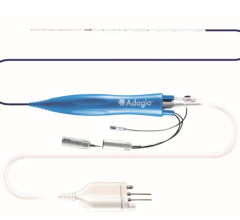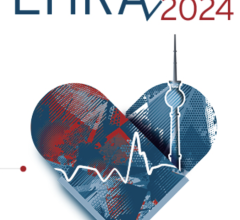
They have discovered the cellular mechanism underlying this cardiovascular anomaly that is very common among people. Image courtesy of the University of Malaga
March 31, 2023 — Scientists of the Department of Animal Biology of the University of Malaga have discovered the cellular mechanism that originates coronary arterio-ventricular fistulae, a congenital anomaly that, in severe cases, may result in death.
José María Pérez Pomares, Professor at the UMA, and also member of IBIMA-Plataforma BIONAND, has conducted this study in collaboration with researchers of the National Center of Cardiovascular Research (CNIC) of Madrid, the Maternity and Children’s Hospital of Malaga, the Center for Applied Medical Research (CIMA) of Pamplona, and the Necker Hospital and Pasteur/Imagine Institute of Paris. The results have been published in the scientific journal Experimental and molecular medicine, of the prestigious publishing company Nature.
Aberrant connections
Coronary fistulae are aberrant connections between different blood vessels of the coronary system, large arteries or veins (aorta, pulmonary or cava) or other parts of the heart, such as its chambers (atria and ventricles). The most common coronary fistula is precisely this last type, the one connecting one coronary artery to the inside of the heart, the type of fistula that has been studied by these researchers of the University of Malaga.
It is estimated that between 0.21 and 5.8 percent of the population have coronary anomalies, and between 0.1 and 0.2 percent of the patients that undergo medical examination of their coronary arteries have a fistula. “It’s a relatively low incidence rate, although we have to take into account that, in many cases, the presence of this defect is not diagnosed”, explains Pérez Pomares.
While fistulae are often small and do not entail serious conditions or complications, allowing those affected to lead a normal life, the largest fistulae may associate to serious complications, such as endocarditis –infection of the tissue that covers the heart internally–, hypertrophy or dilatation of ventricular walls or sudden death.
“The pathology corelates with other heart conditions; the spectrum is highly variable”, says the Professor at the UMA.
Early diagnosis
It is known that this congenital malformation appears during embryonic development, although so far there has been limited information on its origin.
Therefore, Pérez Pomares, who chaired the Working Group on Development, Anatomy & Pathology of the European Society of Cardiology for two years (2018-2020), has led one of the few studies that explains the causes of this defect, a study that may help improve early diagnosis of this type of anomalies and other associated pathologies.
Results suggest that the appearance of discontinuities in the ventricular wall lies in the origin of this coronary defect.
The Professor at the UMA points out that cardiac chambers have three tissue layers: endocardium, the most inner tissue; myocardium, the thick central layer, which enables the contraction of the atria and ventricles and, therefore, blood circulation; and epicardium, which covers the external surface of the organ.
When the endocardium and the epicardium anomalously come into contact during early stages of embryonic development, normally because the myocardium that separates these two layers present abnormally thinner regions or porous zones, a connection is generated between the surface and the interior of the heart, which will mature in a fistula.
In conducting this study, Pérez Pomares’ team worked on genetic and experimental animal models, but they could also study human samples of a particular case of paediatric coronary fistula. These samples were obtained through informed consent for research purposes. The results open the door to identify new candidate genes for early diagnosis of these congenital anomalies and their associated risks.
For more information: https://www.uma.es
Reference:
Palmquist-Gomes, P., Ruiz-Villalba, A., Guadix, J.A. et al. (2023) Origin of congenital coronary arterio-ventricular fistulae from anomalous epicardial and myocardial development. Exp Mol Med 55, 228–239 https://doi.org/10.1038/s12276-022-00913-x


 April 10, 2024
April 10, 2024 








